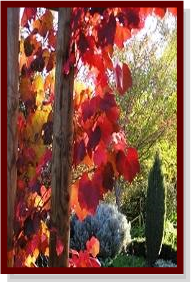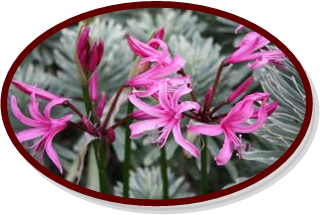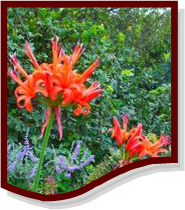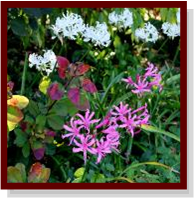
|
In some ways the cattle invasion of my garden, which I gloomily recounted a couple of weeks ago (see The Land, 21.02), hasnít turned out to be all bad.
Thereís always a fair amount of cutting back to be done in March anyway, if I donít want plants to look daggy through winter. Only this week I was chomping into tired looking achilleas, furry grey ballota (B. pseudodictamnus) and swathes of a gorgeous, purple bergamot hybrid (Monarda) thatís been flowering for weeks and whose label disappeared months ago, a lesson if ever I needed it to write things down when I plant them.
But thanks to the boys my abelias, oak-leaf hydrangeas and evergreen honeysuckle hedge (Lonicera sempervirens) needed only a light trim to tidy them up. Thereís enough to do in the garden in March without extra pruning.
Finalising my bulb orders last week in a desperate effort to get the job done before Easter, I remembered admiring a beautiful scarlet hippeastrum hybrid, ĎBallentinoí, when I was on the north coast recently. Hippies have broad, glossy leaves and large trumpet-shaped flowers but being frost-tender are normally only for coastal gardens.
However according to Tesselaar(www.tesselaar.net.au/) a range of dwarf hippies known as Sonatini Hippeastrums are reported to survive -15 Celsius, surely hardy enough even for Bathurst. Iíve made a diary note to order in August when they become available.
Tesselaars offer half a dozen varieties in shades of red, including ĎBallentinoí, pink, white and a stunning double cream, ĎAlaskaí.
Moving on from bulbs, March is a good time to transplant evergreen shrubs. My bete noire, The Efficient Gardener, never has to transplant anything because she plans her garden on paper and gets it right the first time, as she is fond of telling me.
|

|
††††† †††††††††††††††††††
|
|
I do have a plan as a matter of fact, but itís of little use as nurseries rarely have the plants I want when I need them. I donít know how the Efficient Gardener gets round this; maybe she orders a year in advance.
My plant purchases consist of things that Iíve hankered after for ever, buy, bring home in triumph and then install in what invariably turns out to be the wrong place.
So if youíre anything like me, autumn is a good time to rectify things. Remember when transplanting that itís vital to trim a shrubís leaves and branches in approximate proportion to the amount of root that you lost when you dug it up.
If you donít do this you risk upsetting the delicate balance between feeding and growth and the root system will be too small to deliver moisture and nutrients to the leaves. Keeping a large root ball helps, as does keeping the plant watered, including its foliage, until new roots develop.
Deciduous shrubs including roses are far easier to move: they can be transplanted in winter when they can concentrate on making new roots without any leaves to worry about.
March is a good time to top-dress the lawn and also to sow a new one. If youíre rejuvenating an old lawn, you may need to spray it with a lawn weeder that kills broad-leaved weeds without affecting the grass.
Then spread some loam over the lawn and rake it in before re-sowing. Yates have a brilliant product called Easy Patch Lawn Repair that includes drought-hardy grass seed, fertiliser, wetting agent, and coir to provide an instant seed bed.
Looking ahead to September, polyanthus and violets can be divided and replanted this month, to flower with spring bulbs.
Sweet peas and hollyhocks can be sown in March, and lettuce, radishes, spinach and leeks.
In Fionaís Garden: The Land, March 2013 |
|
Gardening Tips |






